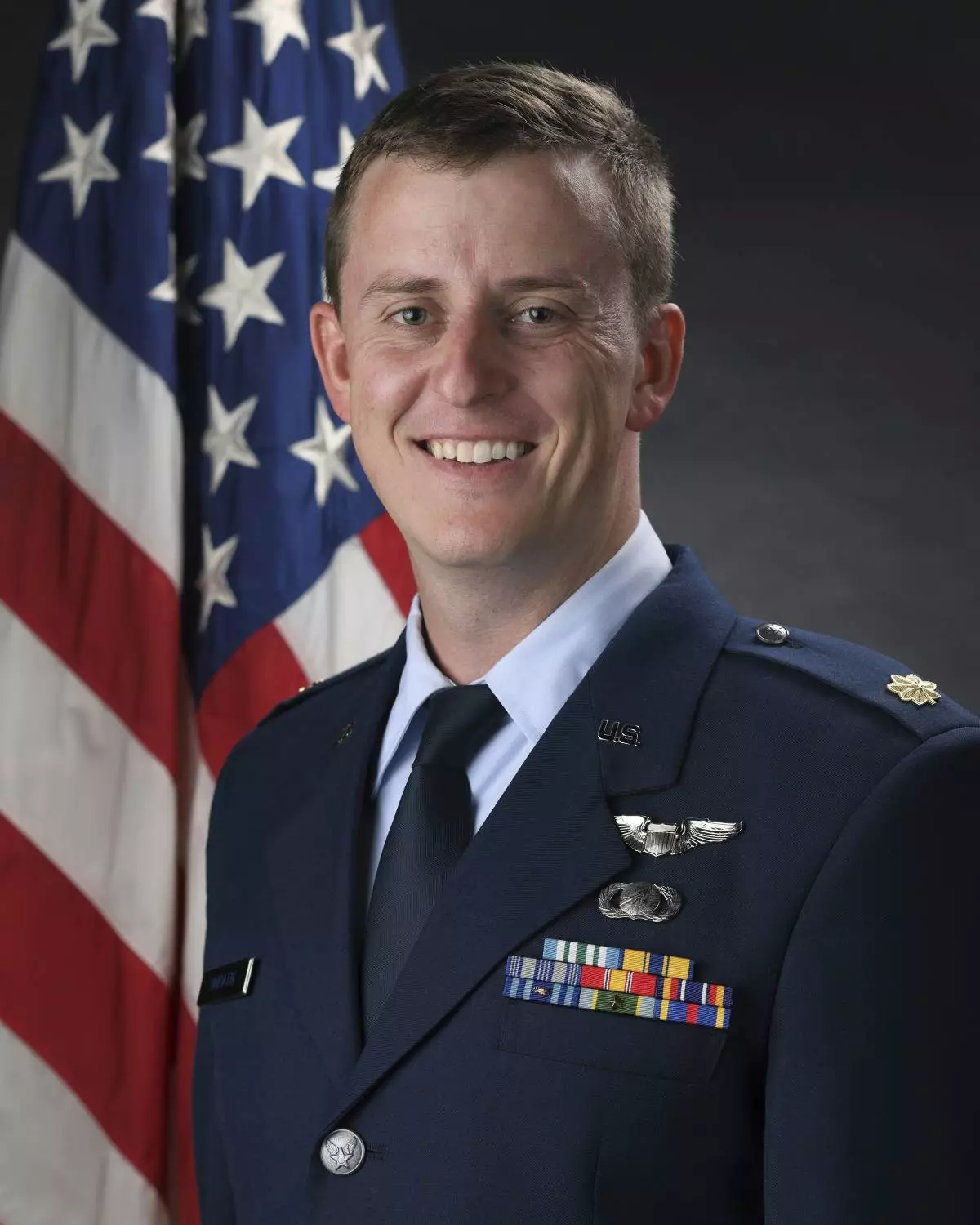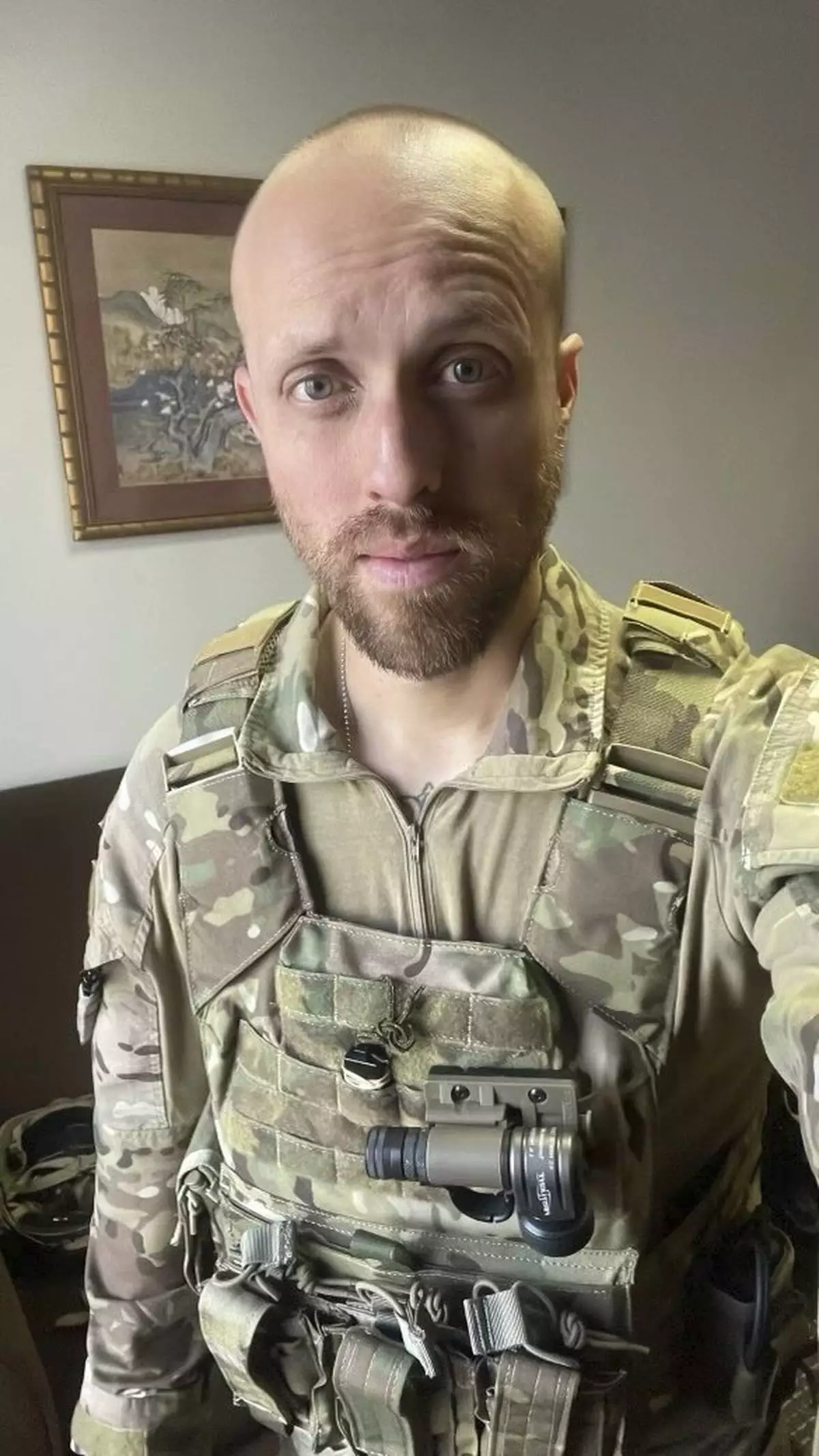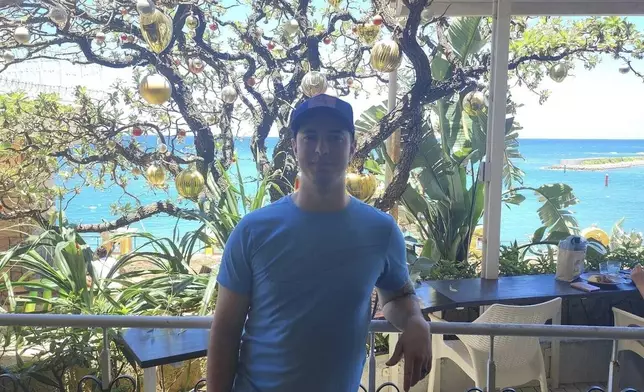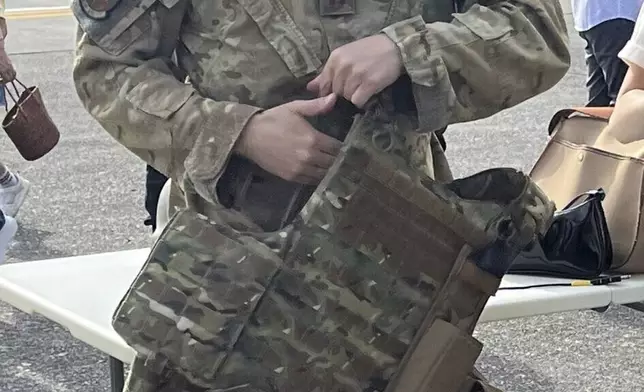WASHINGTON (AP) — A deadly Osprey aircraft crash last November off Japan was caused by cracks in a metal gear and the pilot’s decision to keep flying rather than heed multiple warnings that he should land, according to an Air Force investigation released Thursday.
The CV-22B Osprey crash killed eight Air Force Special Operations Command service members and led to a monthslong military-wide grounding of the fleet. There have been four fatal Osprey crashes in the past two years, driving investigations into the Osprey's safety record and creating a split among the services about the future role of the unique aircraft that can fly like an airplane but land like a helicopter.
For months, the Air Force would only say an unprecedented component failure caused the crash. On Thursday, it said a toothed piece called a pinion gear — a critical part of the proprotor gearbox — was to blame. The proprotor gearbox serves as the aircraft's transmission. Inside each gearbox, five pinion gears spin hard to transmit the engine's power to turn the Osprey’s masts and rotor blades.
While the Air Force is confident it was the pinion gear that failed, it still does not know why.
But a Pentagon program office in charge of the V-22 Ospreys knew that “total loss of aircraft and crew were possible” if those proprotor gearbox components failed, lead investigator Lt. Gen. Michael Conley told reporters Wednesday before the report's official release. In a rare move, the investigation also faulted that office, saying it did not share safety data that could have educated crews on the severity of the risk.
In an interview with The Associated Press, Conley said he believed it was the pilot's instinct to complete the military exercise that drove his decisions.
“To a degree, it’s a way of life here. I mean, we we want people in this command that that are biased toward ‘yes,’ biased toward getting the mission done,” Conley said. “As we went through the investigation, I saw someone that was confident in the aircraft but not cocky.”
On the day of the crash, the Osprey was flying along the coast of mainland Japan headed to Okinawa when the first indications of trouble began.
In aircraft, vibrations are monitored as signs of potential trouble. A data recorder noted vibrations on the left side of the driveshaft that links the two engines and acts as a fail safe in case one engine loses power.
A second vibration followed. This time one of the five pinion gears inside the left proprotor gearbox was vibrating.
But pilot Maj. Jeff Hoernemann and his crew never knew about the vibrations because that data can only be downloaded at the end of a flight.
Five minutes after the first vibration, a left proprotor gearbox chip burn warning posted in the cockpit. The warning lets the crew know there was metal flaking coming off the Osprey’s gearing, another indication of stress.
Chipping is a common enough occurrence in rotary flight that there is a safety net designed into the Osprey. The chip detector can burn the chips off so they do not travel in the oil and destroy the transmission.
If the burn is successful, the warning clears.
The crew got six chip warnings that day. Each presented an opportunity for Hoernemann to heed the warning and land as a precaution, but he did not, and investigators found that decision was a causal factor in the crash.
When the third chip burn warning posted, the crew was close to mainland Japan and just 10 miles (16 kilometers) from its nearest airfield. The official guidance after three chip burns was to “land as soon as practical,” guidance that still leaves that decision to the pilot's discretion.
According to the voice data recorder, Hoernemann and the crew were looking for secondary indications of a problem, such as the proprotor gearbox overheating, but saw none. So Hoernemann instead directed his co-pilot to keep monitoring the situation and elected to continue the 300-nautical-mile flight over water to Okinawa.
Hoernemann was likely balancing split priorities in his decision-making, the investigation found. He was leading the airborne portion of the military exercise and had spent months planning for it.
Until almost the final minutes of flight, he kept his primary focus on completing the exercise, not the evolving aircraft situation, the investigation found. He rejected his co-pilot's suggestions on using an alternative onboard mapping tool to identify the closest airfield to land. Throughout the flight, the co-pilot was also not direct about “his uneasiness with the evolving issues,” the investigation found, based on the recovered voice data.
The fourth and fifth chip burn warnings came fast. Then with the sixth, escalation: just chips. It meant the Osprey could not burn them off. “Land as soon as practical” turned into “land as soon as possible.” Still, the crew members did not act with urgency.
In the final minutes of flight, they had begun to position the aircraft to land. The Osprey was half a mile (0.8 kilometers) from an airfield at Yakushima, flying about 785 feet (240 meters) above the water.
But they elected to hold for local air traffic to take off, even as Hoernemann confirmed over the radio they had an in-flight emergency.
The Osprey gave its final chip-related warning three minutes before the crash: chip detector fail. Hoernemann told the crew he was no longer worried, that he now assumed the earlier warnings were errors due to a faulty chip detector.
Investigators later found the fail message occurred because the detector “had so many chips on it, it couldn't keep up,” Conley said.
Inside the proprotor gearbox, the pinion gear was breaking apart. At least one piece wedged into the teeth of the larger transmission gearing system, jamming and breaking off gearing teeth until the left proprotor gearbox could no longer turn the Osprey’s left proprotor mast.
Within six seconds of the proprotor gearbox failing, catastrophic destruction splintered through the Osprey gearing and interconnected drive system. At that point, there was nothing the crew members could have done to save themselves or the aircraft, the investigation found.
The Osprey rolled violently, inverted twice with its left engine housing on fire and crashed into the water, killing all on board.
Following the crash, crews are now directed to land as soon as practical on a first chip burn and as soon as possible on the second. The joint program office is also working on a new system that would communicate vibration data in real time to pilots, to give them better awareness during flight.
Officials at the Japanese Defense Ministry said one of their Ospreys reported a first chip burn warning last August and made a precautionary landing. After the November crash, Japan grounded its fleet. It has restarted flying operations according to the tighter flight restrictions implemented by the U.S. military — operating within 30 minutes of a landing location and performing more frequent chip checks and maintenance.
Japanese Defense Minister Minoru Kihara told reporters Friday that even though the root cause of the cracking had not been determined, the new precautionary measures suffice.
“I believe Ospreys have no safety problems.” Kihara said, but he added that Japan will continue to cooperate with the U.S. military “to ensure highest levels of safety measures are taken.”
Kihara said that even though the cause of the gear damage remained unknown, Japan does not intend to conduct its own probe or ask the U.S. to do further investigation because the two sides have shared “unprecedented levels of classified information” about the accident. He said Japan expects further improvement are being made on the Osprey parts.
The V-22 Osprey is jointly produced by Bell Flight and Boeing.
The accident killed Maj. Eric V. Spendlove, 36, of St. George, Utah; Maj. Luke A. Unrath, 34, of Riverside, California; Capt. Terrell K. Brayman, 32, of Pittsford, New York; Tech. Sgt. Zachary E. Lavoy, 33, of Oviedo, Florida; Staff Sgt. Jake M. Turnage, 25, of Kennesaw, Georgia; Senior Airman Brian K. Johnson, 32, of Reynoldsburg, Ohio; Staff Sgt. Jacob M. Galliher, 24, of Pittsfield, Massachusetts; and Hoernemann, 32, of Andover, Minnesota.
Associated Press writer Mari Yamaguchi in Tokyo contributed to this report.

FILE - Japanese coast guard helicopter and patrol vessel conduct search and rescue operation in the waters where a U.S. military Osprey aircraft crashed into off the coast of Yakushima Island, Kagoshima prefecture, southern Japan, Nov. 30, 2023. (Kyodo News via AP, File)

This undated photo released by U.S. Air Force Special Operations Command Public Affairs Office, shows U.S. Air Force Staff Sgt. Jacob “Jake” M. Galliher. (U.S. Air Force Special Operations Command Public Affairs Office via AP)

This undated photo released by U.S. Air Force Special Operations Command Public Affairs Office, shows U.S. Air Force Senior Airman Brian “Kody” Johnson. (U.S. Air Force Special Operations Command Public Affairs Office via AP)

This undated photo released by U.S. Air Force Special Operations Command Public Affairs Office, shows U.S. Air Force Staff Sgt. Jake M. Turnage. (U.S. Air Force Special Operations Command Public Affairs Office via AP)

This undated photo released by U.S. Air Force Special Operations Command Public Affairs Office, shows U.S. Air Force Tech. Sgt. Zachary E. Lavoy. (U.S. Air Force Special Operations Command Public Affairs Office via AP)

This undated photo released by U.S. Air Force Special Operations Command Public Affairs Office, shows U.S. Air Force Capt. Terrell “Terry” K. Brayman. (U.S. Air Force Special Operations Command Public Affairs Office via AP)

This undated photo released by U.S. Air Force Special Operations Command Public Affairs Office, shows U.S. Air Force Maj. Luke A. Unrath. (U.S. Air Force Special Operations Command Public Affairs Office via AP)

This undated photo released by U.S. Air Force Special Operations Command Public Affairs Office, shows U.S. Air Force Maj. Eric “Doc” V. Spendlove. (U.S. Air Force Special Operations Command Public Affairs Office via AP)

FILE - In this photo provided by Japan Coast Guard, debris believed to be from a U.S. military Osprey aircraft is seen off the coast of Yakushima Island in Kagoshima Prefecture in Japan, Nov. 29, 2023. (Japan Coast Guard via AP, File)

FILE - U.S. MV-22B Osprey transport aircraft are parked at the U.S. Marine Corps Air Station Futenma in Ginowan, south of Okinawa, southern Japan, Wednesday, Sept. 6, 2023. (AP Photo/Hiro Komae, File)
























